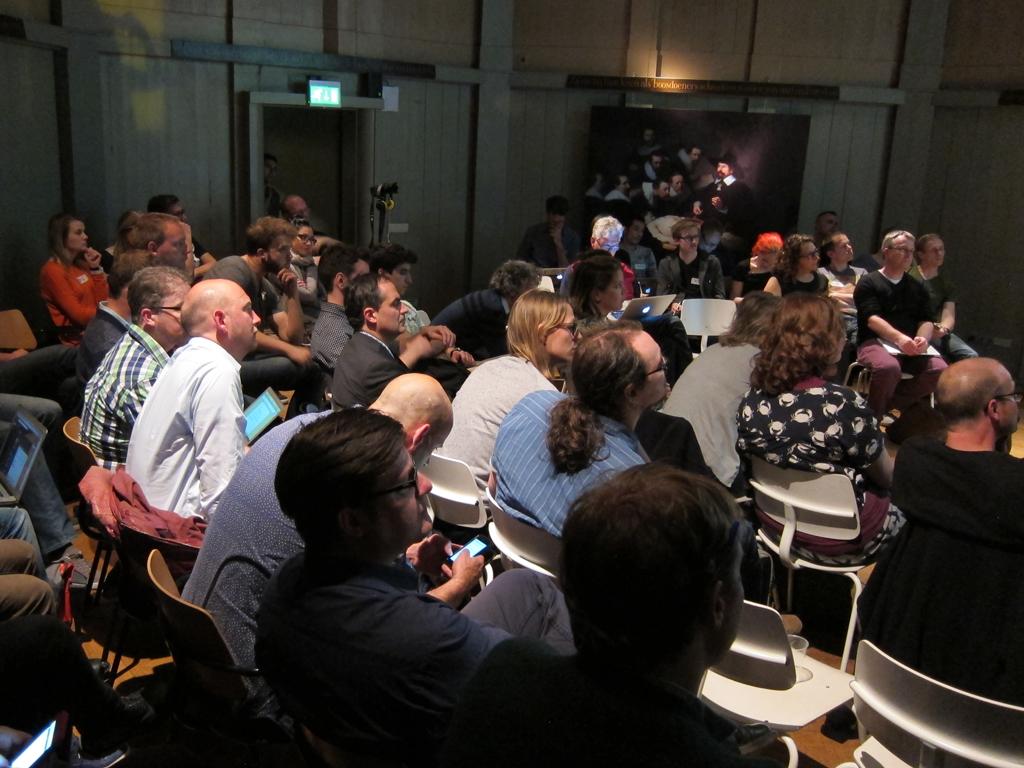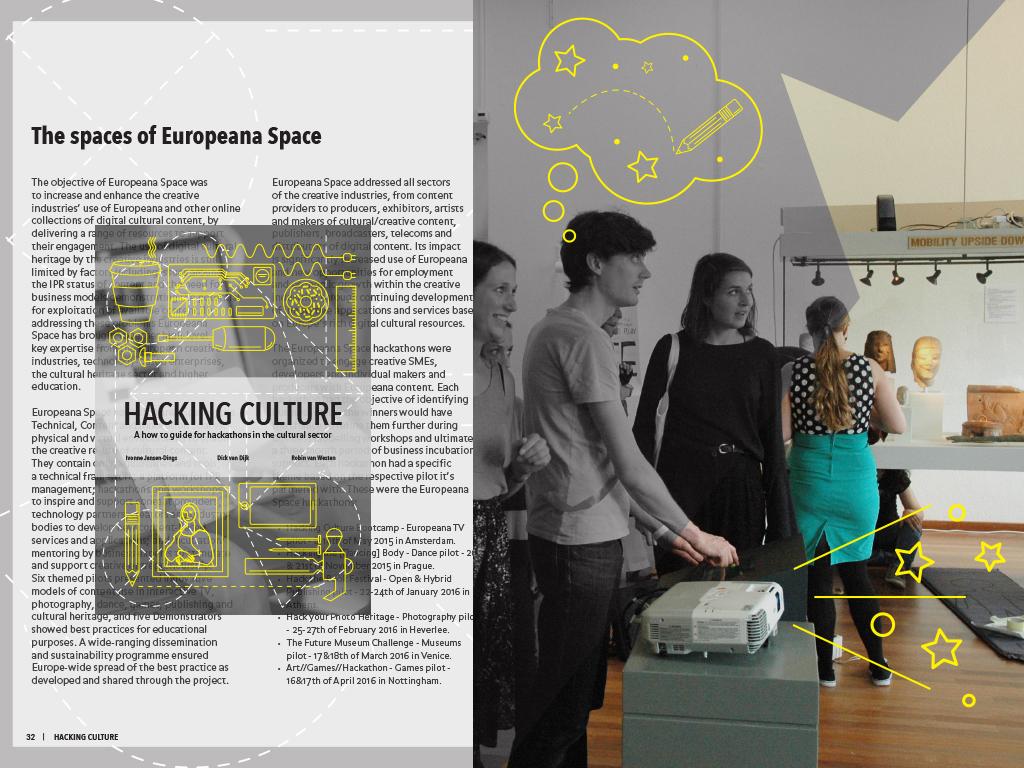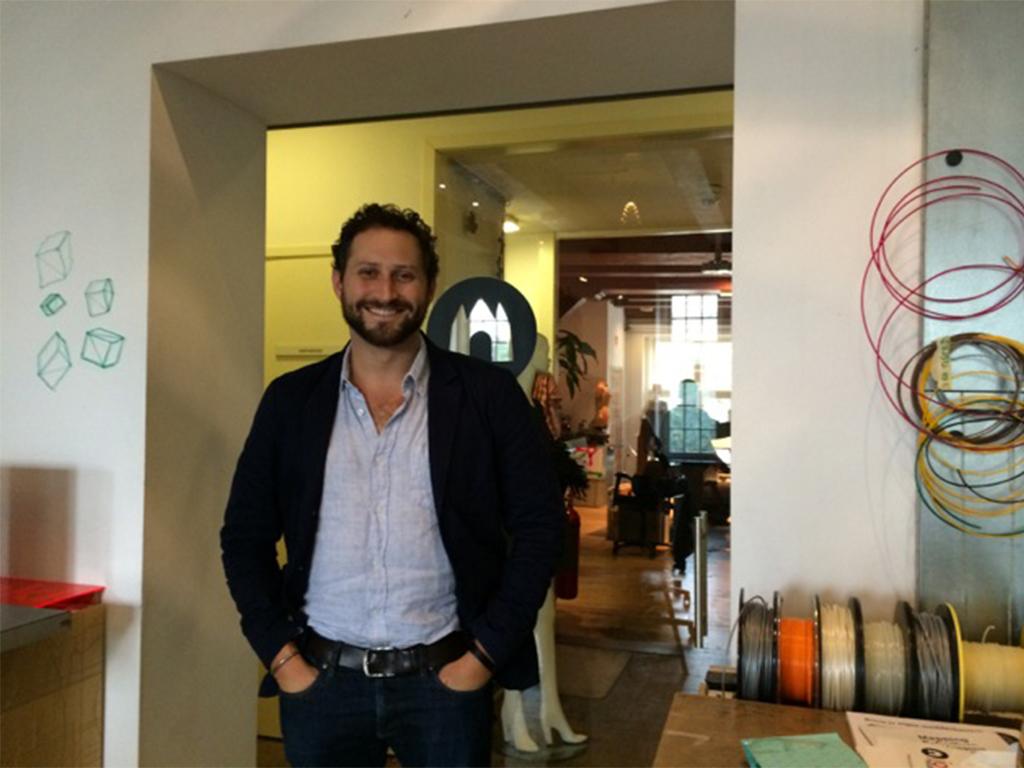Waag hosted an evening of Hacking Culture Talks, the public kick-off of our exciting weekend hackathon (Hacking Culture Bootcamp). The talks included four experts who spoke about media strategies and the potential of cross-media, interactive concepts for broadcasters and the museum sector. This is event was part of our larger involvement in innovation within the heritage sector.
Jane Finnis (from Culture24 in the UK) began with a presentation about the development of the app, VanGoYourself. Finnis spoke enthusiastically about the need to focus on the emotional element when designing for memorable experiences within the museum sector. For this particular project, they hoped to create a personal connection between visitors and artworks online—a difficult and complicated task in a digital space. Their solution to the problem was VanGoYourself, a simple web app that encourages users to recreate and reinterpret scenes from famous paintings (alone or with friends) and submit a photograph to a curated website. People have responded to the initial call with gusto—choosing paintings to recreate and snapping hilarious selfies with friends. The app has even been featured on the BBC. Personally, I'm not surprised by all this attention, and encourage you to go submit your own snapshot. Go VanGoYourself!
The second speaker of the evening, Wilko van Iperen, is the head of the Digital & Innovation Division of the KRO-NCRV. He is involved in the development and implementation of successful television programs, and spoke about how to prolong audience engagement after the end of an episode using transmedia stories. This task is particularly interesting because broadcasters must find ways of extending the viewer experience without providing them with the next episode. Perhaps one of the most interesting examples concerned SpangaS, a youth drama programme about a group of students attending a secondary school. To extend the show's reach, the broadcaster created an interactive space online where viewers could watch and react to extra “confessional” videos from the characters. The space even allows for a dialogue to emerge between the characters and the viewers—something that truly immerses the audience in the programme's world.
The third speaker was Rutger Verhoeven, who is head of Digital of BNN-Vara and responsible for the implementation of social media in radio and television broadcasting, storytelling concepts, and mobile applications. Verhoeven spoke primarily about the importance of synching brand activity with customer activity. In other words, it is useful to find out when users search for content, so that the release of new content can be scheduled within those time periods. He also stressed the advantages of knowing how long a piece of content remains relevant. In order to come up with the best strategies for content release, Verhoeven developed several tools to track and visualise when customers were searching for content, and which types of content remained relevant the longest. These tools increased user engagement massively, and doubled the length of time tweets remained relevant.
The evening wrapped up with a talk from Simon Cronshaw (from REMIX Summits) about best practices in cultural heritage and the factors of success in cultural entrepreneurship. He also discussed the criteria on which submissions from the Hacking Culture Bootcamp hackathon would be judged. As a starting point, Cronshaw spoke about salient trends in cultural entrepreneurship. Such trends included: mindfulness, trusted brands, multichannel networks, curatorial power, digital natives, web-native storytelling, and the gaming revolution. He also noted that while change often comes from within organisations, creative entrepreneurs and disruptors can also have a large impact.
The talks left our heads buzzing with new information. And the audience teemed with questions—hands shot up at the end of every presentation. Overall, the speakers provided hackathon participants with plenty of inspiration and the rest of the audience with interesting food for thought.
The Europeana Space project has received funding from the European Union's ICT Policy Support Programme as part of the Competitiveness and Innovation Framework Programme, under GA no. 621037.


